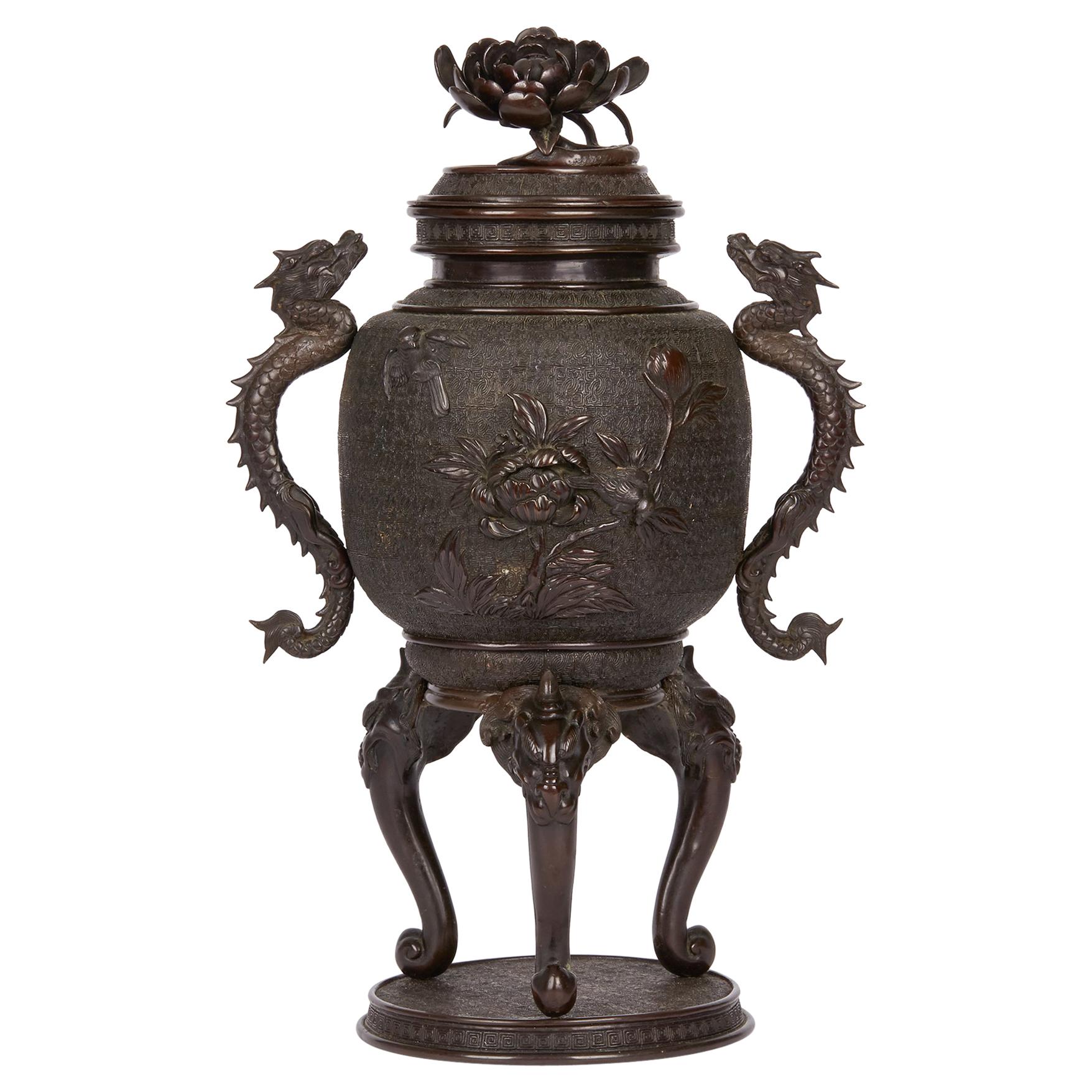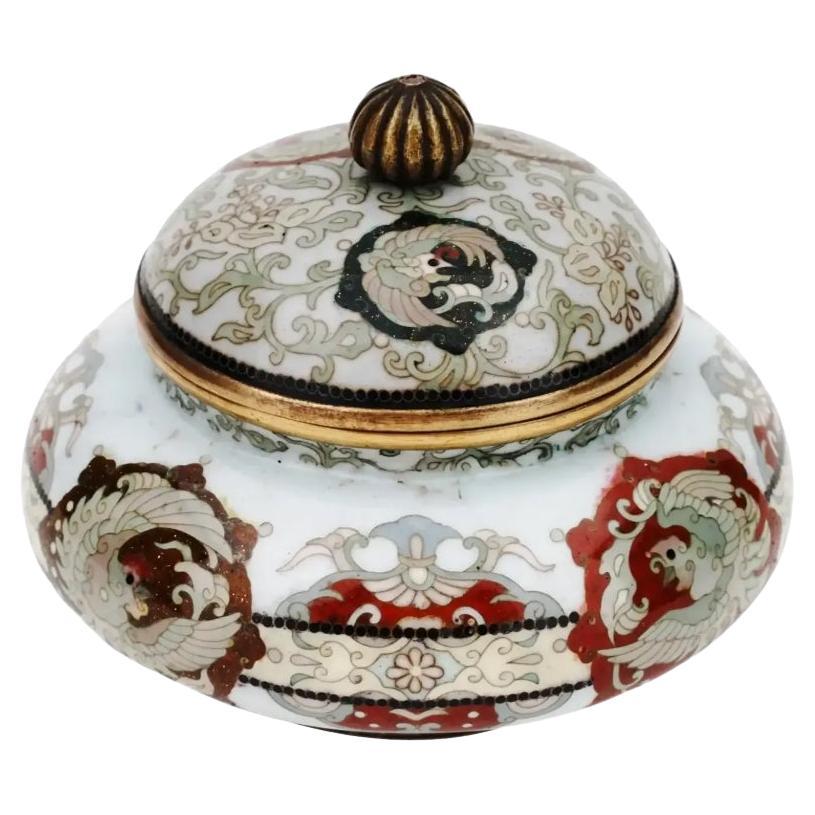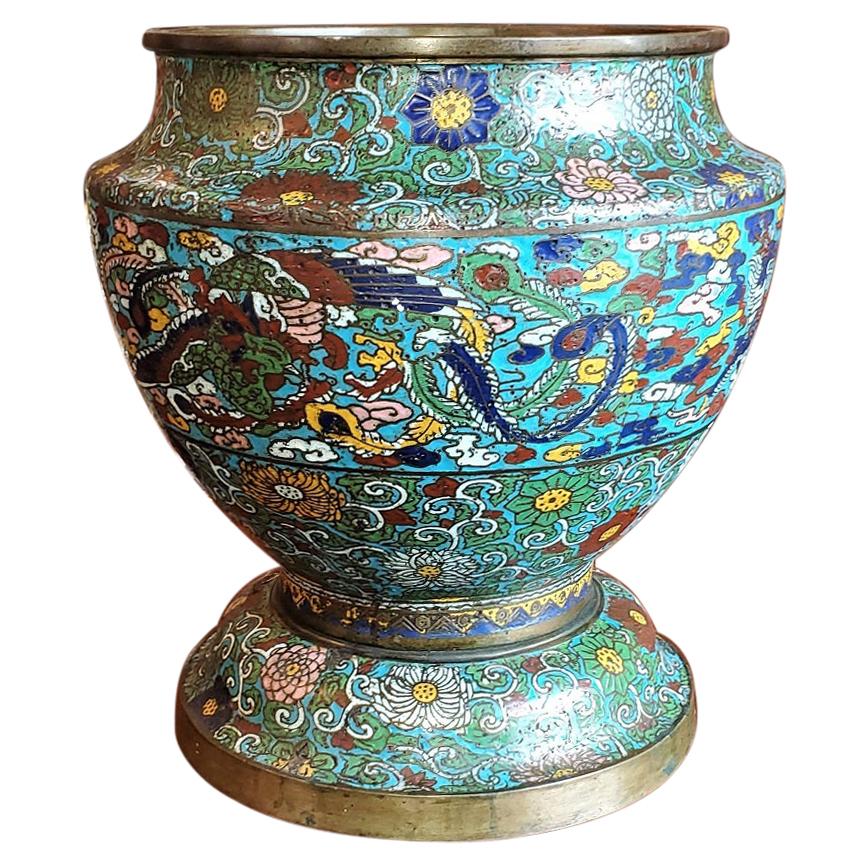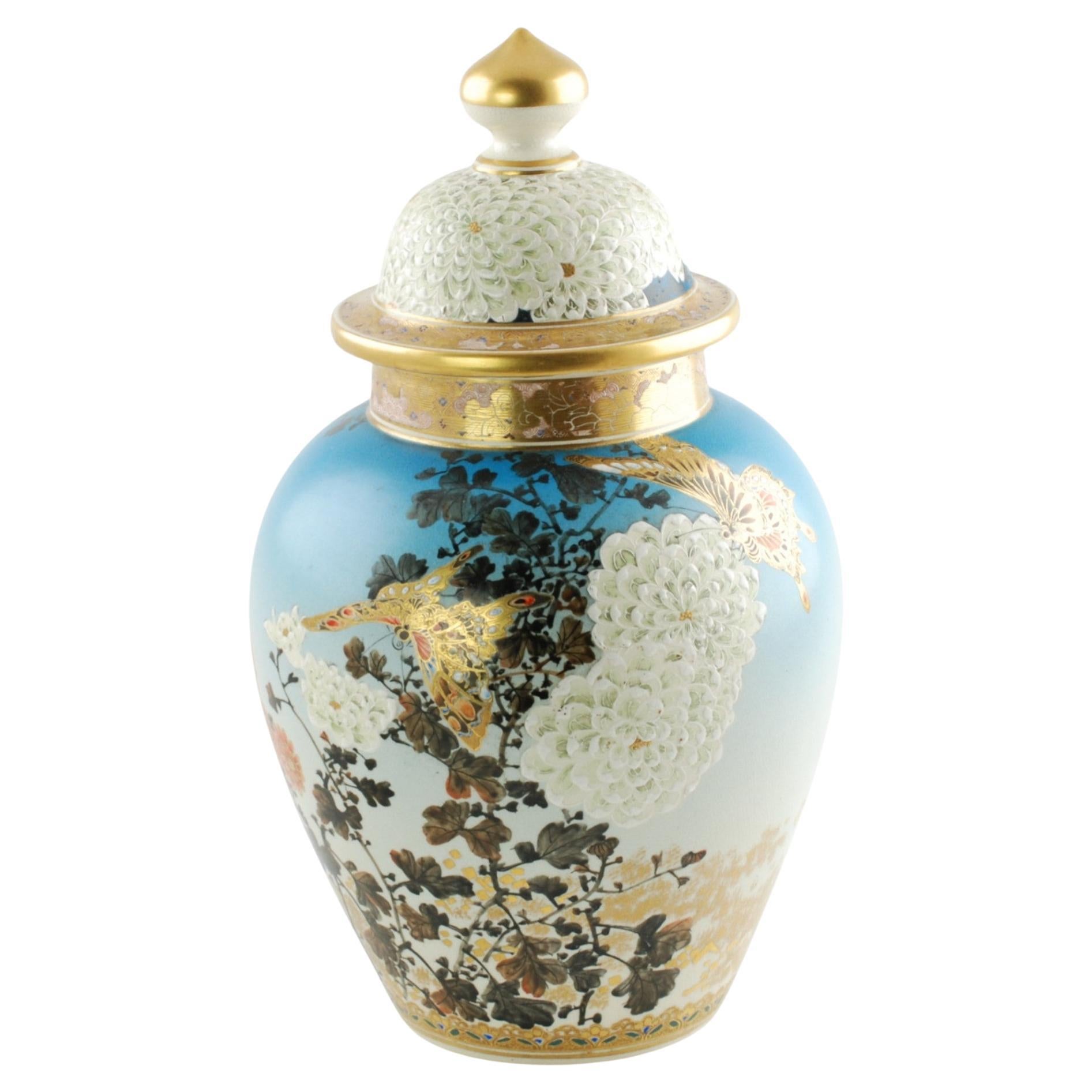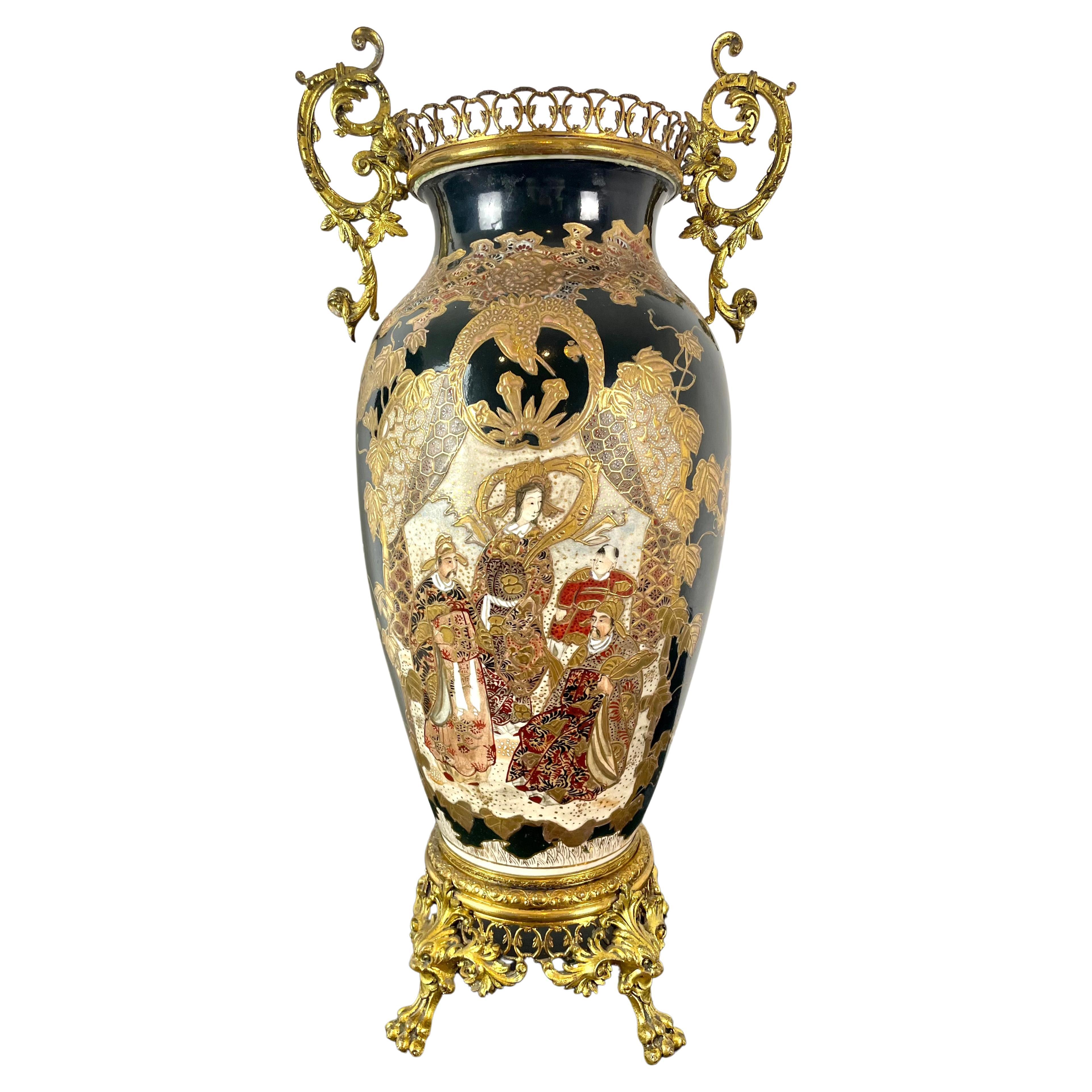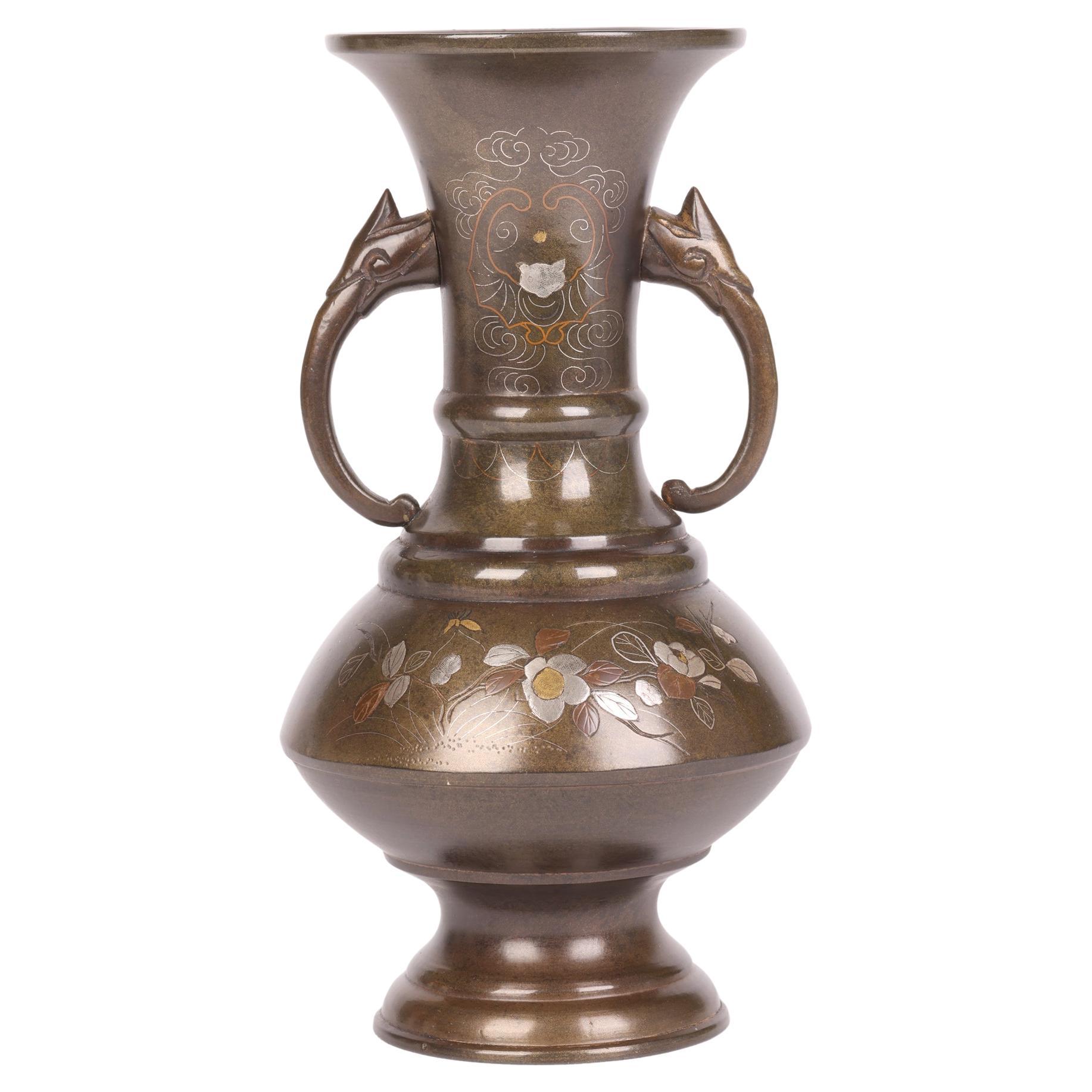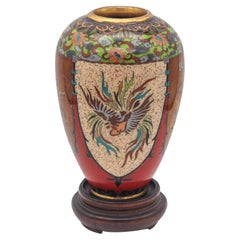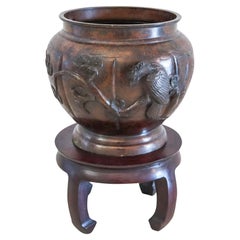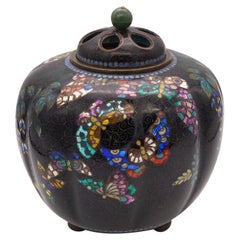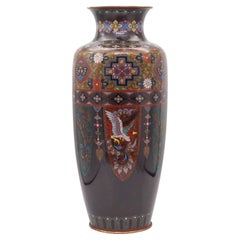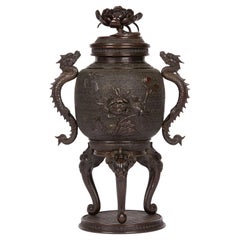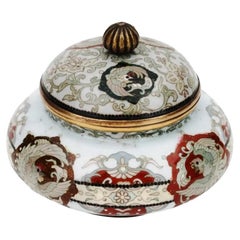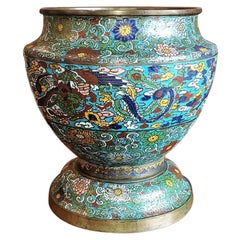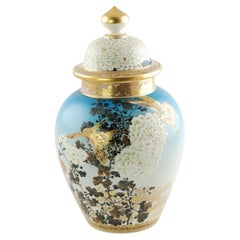Items Similar to Japan 1890 Meiji Shibayama Round Urn in Gilded Wood and Sterling Silver
Want more images or videos?
Request additional images or videos from the seller
1 of 11
Japan 1890 Meiji Shibayama Round Urn in Gilded Wood and Sterling Silver
$5,588per set
$6,985per set20% Off
£4,266.41per set
£5,333.02per set20% Off
€4,929.80per set
€6,162.25per set20% Off
CA$7,844.49per set
CA$9,805.62per set20% Off
A$8,743.51per set
A$10,929.38per set20% Off
CHF 4,587.42per set
CHF 5,734.27per set20% Off
MX$106,772.46per set
MX$133,465.58per set20% Off
NOK 58,086.68per set
NOK 72,608.35per set20% Off
SEK 54,900.75per set
SEK 68,625.94per set20% Off
DKK 36,793.26per set
DKK 45,991.58per set20% Off
About the Item
Shibayama urm from the Japan meiji (1858-1912) period.
Gorgeous piece of art, created in the imperial Japan during the Meiji period, circa 1890. This is a little urn with a lid crafted in gilded wood, shibayama panels and sterling silver. Composed by a four footed round vase with two sterling silver handles in the shape of trees and the lid on top accented with the figure of a crab in sterling silver. The gilded wood is decorated with flowers, sea patterns and the imperial flower of chrysanthemums.
The Crab
Legend held that the crabs were the reincarnations of samurai slain at the Battle of Dan-no-ura in 1185 AD, a war over the Japanese imperial throne. These are said to be the spirits of the departed Tairas. Not surprising as they have a lot to scowl about. They lost absolutely everything including the sacred imperial sword.
Gemstones: Decorated with two panels mounted with intricate scenes in the shibayama technique with carvings of jade, carnelian, agate and nacre of different colors.
Weight: 113.95 Grams, (73.04 Dwt).
Measurements: 130.8 mm by 83 mm by 108 mm (5.15 x 3.27 x 4.25 Inches).
Hallmarks: Signed in the bottom with the maker's cartouche inside a circle.
Shibayama
The art form known as shibayama is named after the Shibayama area of present-day Chiba prefecture. The shibayama technique was created by Onoki Senzo, an Edo haberdasher who lived during the An’ei era (1772–1781). His style of inlaying became so popular that he named works done with the inlay technique after his hometown of Shibayama and later also adopted this name as his surname. Shibayama refers to the intricate carving and minute encrustation of various materials on to a ground material. The inlay typically consists of mother-of-pearl, ivory, tortoiseshell and coral, the combination creating a delightful contrast of colours and textures.
Meiji period
Is an era of Japanese history that extended from October 23, 1868 to July 30, 1912.The Meiji era was the first half of the Empire of Japan, when the Japanese people moved from being an isolated feudal society at risk of colonization by Western powers to the new paradigm of a modern, industrialized nation state and emergent great power, influenced by Western scientific, technological, philosophical, political, legal, and aesthetic ideas. As a result of such wholesale adoption of radically different ideas, the changes to Japan were profound, and affected its social structure, internal politics, economy, military, and foreign relations. The period corresponded to the reign of Emperor Meiji. It was preceded by the Keio era and was succeeded by the Taisho era, upon the accession of Emperor Taisho.
Provenance: The Flying Cranes gallery, New York NY. Objets D'art Gallery, Kensington, MD.
Condition: The overall condition of this urn is perfect. Beside the little normal wear, there is no damage to any parts. All gemstones are secured in the settings. This piece has been carefully inspected to guarantee the condition and authenticity.
INVENTORY REF: D031223ASNM/.1121.
- Dimensions:Height: 4.25 in (10.8 cm)Width: 5.15 in (13.09 cm)Depth: 3.27 in (8.31 cm)
- Sold As:Set of 2
- Style:Meiji (Of the Period)
- Materials and Techniques:
- Place of Origin:
- Period:
- Date of Manufacture:1890
- Condition:Wear consistent with age and use. The overall condition of this urn is perfect. Beside the little normal wear, there is no damage to any parts. All gemstones are secured in the settings. This piece has been carefully inspected to guarantee the condition and authenticity.
- Seller Location:Miami, FL
- Reference Number:Seller: D031223ASNM/.11211stDibs: LU8303233277032
About the Seller
5.0
Gold Seller
Premium sellers maintaining a 4.3+ rating and 24-hour response times
1stDibs seller since 2023
206 sales on 1stDibs
Typical response time: 3 hours
- ShippingRetrieving quote...Shipping from: Miami, FL
- Return Policy
Authenticity Guarantee
In the unlikely event there’s an issue with an item’s authenticity, contact us within 1 year for a full refund. DetailsMoney-Back Guarantee
If your item is not as described, is damaged in transit, or does not arrive, contact us within 7 days for a full refund. Details24-Hour Cancellation
You have a 24-hour grace period in which to reconsider your purchase, with no questions asked.Vetted Professional Sellers
Our world-class sellers must adhere to strict standards for service and quality, maintaining the integrity of our listings.Price-Match Guarantee
If you find that a seller listed the same item for a lower price elsewhere, we’ll match it.Trusted Global Delivery
Our best-in-class carrier network provides specialized shipping options worldwide, including custom delivery.More From This Seller
View AllJapan 1890 Meiji Period Decorative Vase In Cloisonné Enamel With Wood Base
Located in Miami, FL
Japanese vase from the Meiji Period (1868-1912).
Beautiful antique decorative vase, created in Japan during the Meiji period (1868-1912), circa 1890s. It was carefully crafted in so...
Category
Antique 1890s Japanese Meiji Metalwork
Materials
Bronze, Enamel
$558 Sale Price / set
20% Off
JAPAN 1900 Meiji Period Bronze Planter Vase With Carved Wood Base
Located in Miami, FL
Large Planter Vase from imperial Japan.
This a beautiful piece of Japanese decorative arts, created in Japan during the Meiji imperial period, circa 1900. The oversized vase can be ...
Category
Antique Early 1900s Japanese Meiji Metalwork
Materials
Bronze
Japan 1890 Meiji Period Bronze Koro Censer in Cloisonne Enamel with Jade Lid
Located in Miami, FL
Japanese Koro from the Meiji Period (1868-1912).
Beautiful antique ten sides fluted koro censer, created in Japan during the Meiji period (1868-1912), ci...
Category
Antique 1890s Japanese Meiji Metalwork
Materials
Jade, Gold, Silver, Bronze, Enamel
$718 Sale Price / set
20% Off
JAPAN 1890-1900 Meiji Period Decorative Six-sided Vase In Cloisonné Enamel
Located in Miami, FL
Japanese vase from the Meiji Period (1868-1912).
This is a beautiful antique decorative vase created in the imperial Japan during the Meiji period (1868-1912), circa 1890s. It was c...
Category
Antique 1890s Japanese Meiji Metalwork
Materials
Gold, Bronze, Enamel
Ota Jinnoei 1890 Imperial Meiji Period Pair of Cloisonne Cabinet Vases
By Ota Jinnoei
Located in Miami, FL
Pair of cloisonne vases designed by Ota Jinnoei.
Beautiful pair of small cabinet vases, created in Japan circa 1890, during the meiji Imperial period (1868-1912). These vases has ...
Category
Antique 1890s Japanese Meiji Metalwork
Materials
Silver, Bronze, Enamel
$1,996 Sale Price / set
20% Off
China Republic 1912-1960 Inside Paint Carved Rock Crystal Vase Silver & Enamel
Located in Miami, FL
An impressive China inside-painted vase in rock crystal.
Beautiful and one-of-a-kind art-piece. created in China during the first years of the China-republic, circa 1912-1949. Thi...
Category
Vintage 1940s Chinese Chinese Export Antiquities
Materials
Multi-gemstone, Rock Crystal, Silver, Sterling Silver, Enamel
$15,880 Sale Price / set
20% Off
You May Also Like
Large Japanese Meiji Bronze Lidded Urn, 19th Century
Located in Bishop's Stortford, Hertfordshire
A large and stylish antique Japanese Meiji bronze lidded twin handle urn standing on a rounded plinth base with tongue and grotesque head formed legs with dragon handles and a flat c...
Category
Early 20th Century Japanese Meiji Metalwork
Materials
Bronze
Antique Japanese Meiji Period Round Cloisonne Covered Jar
Located in Long Island City, NY
An antique Japanese Meiji period round cloisonne covered jar showcasing the exquisite artistry and craftsmanship of the era. This jar is adorned w...
Category
Early 20th Century Japanese Meiji Jars
Materials
Enamel
$1,000 Sale Price
54% Off
Japanese Meiji Champleve and Bronze Urn
Located in Dallas, TX
Presenting a gorgeous Japanese Meiji Champleve and bronze urn.
Made in Japan during the Meiji Period circa 1880.
The body of ...
Category
Antique Late 19th Century Japanese Meiji Metalwork
Materials
Bronze, Enamel
Late 19th Century Signed Japanese Hand Painted Satsuma Temple Jar Meiji Period
Located in Cincinnati, OH
This outstanding late 19th century Japanese Satsuma porcelain covered temple jar has a traditional form with a domed lid. The piece features exquisite hand painted decoration which includes brightly hued flowers and associated foliage along with highly detailed jewel-toned butterflies with gilt highlights, all of which are on a shaded blue ground. The jar and lid also bear large chrysanthemums executed in heavy white enamel with underlying hints of green. The collar of the jar and edge of the lid have wide gilt bands finished with fine incised linear decoration that has been accented with blue, black and white enamel. The underside of the jar is hand lettered with characters reading Dai Nippon...
Category
Antique 1880s Japanese Meiji Ceramics
Materials
Ceramic
Japan Satsuma Porcelain Vase and Golden Metal 19th Century
Located in Beuzevillette, FR
Large Satsuma porcelain vase from the Meiji on a gilt metal frame from the Napoleon III period. On one side of the vase is represented a deity, probably ...
Category
Antique 19th Century Meiji Antiquities
Materials
Metal
Japanese Meiji Twin Handled Bronze Vase with Silver, Brass & Copper Inlay
Located in Bishop's Stortford, Hertfordshire
A fine antique Japanese Meiji twin handled bronze vase decorated with floral designs in silver, brass and copper inlay dating from the 19th century...
Category
Antique 19th Century Japanese Meiji Metalwork
Materials
Silver, Brass, Bronze, Copper
